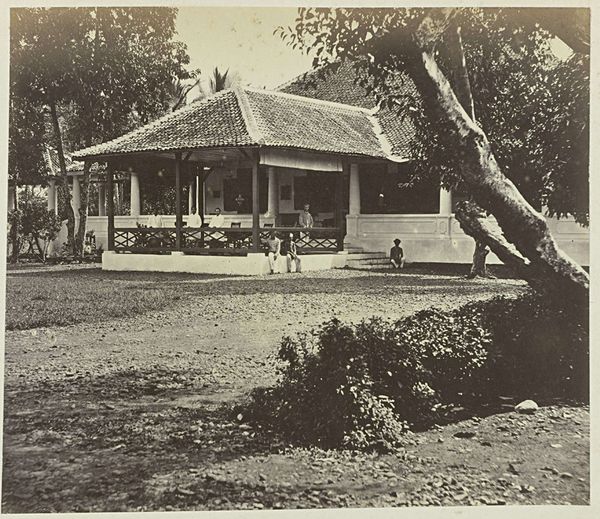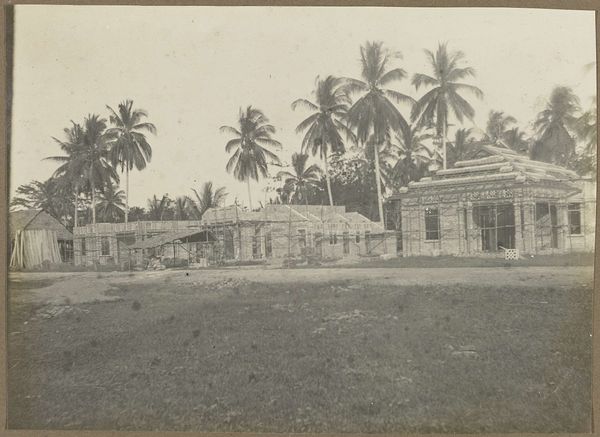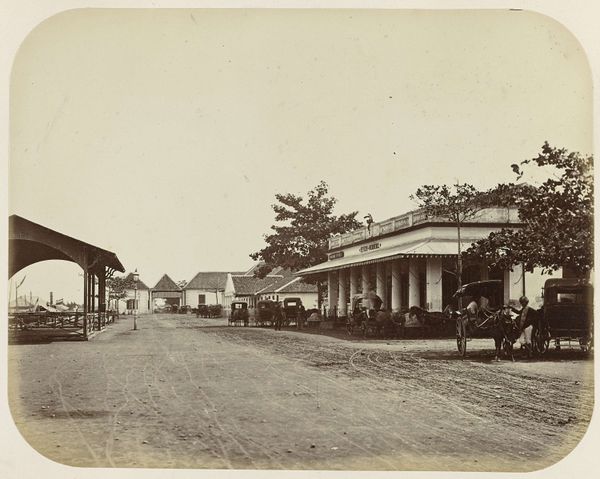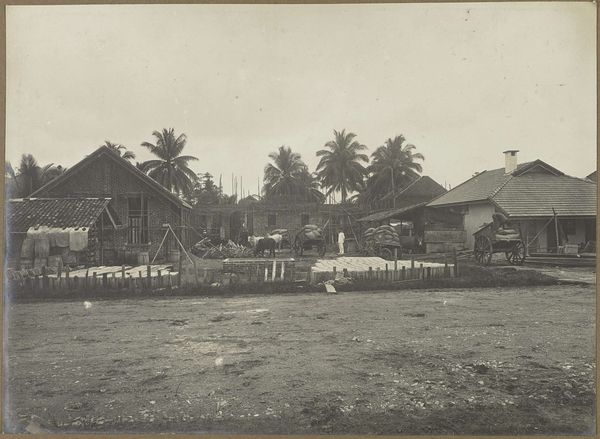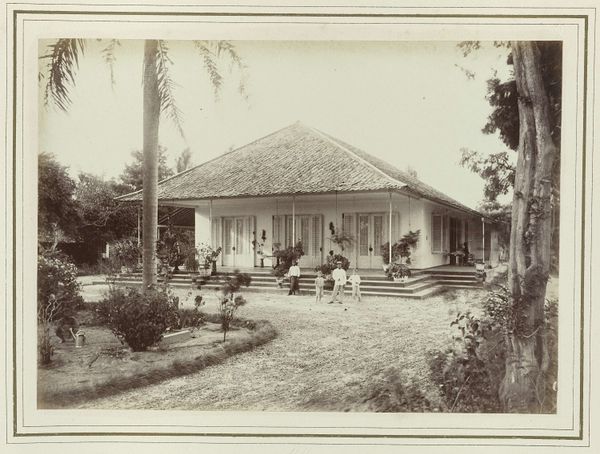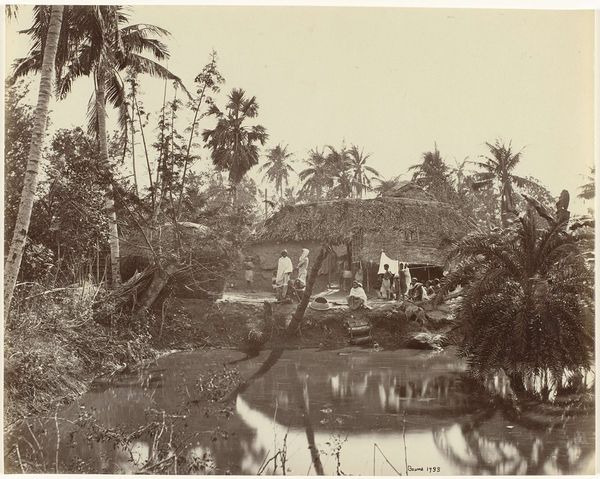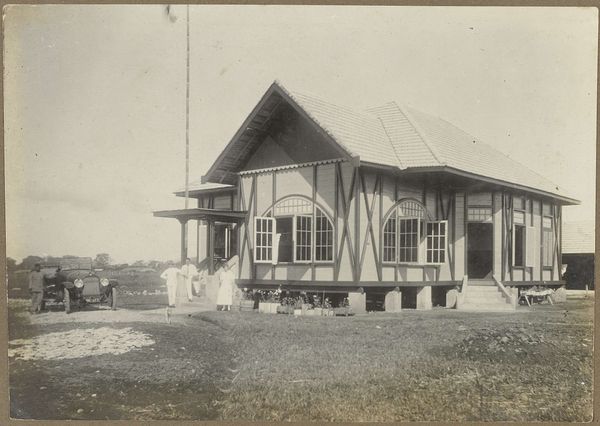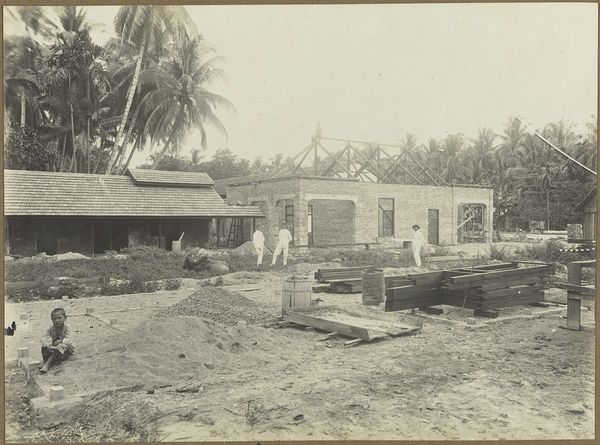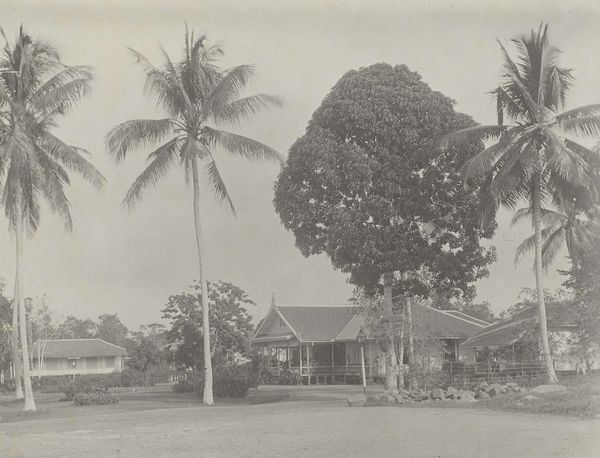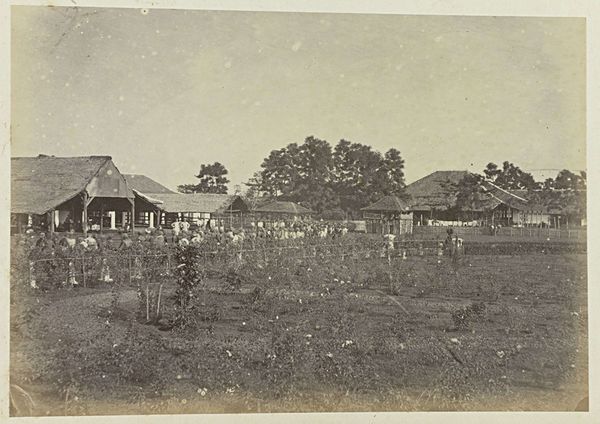
photography, albumen-print
#
landscape
#
archive photography
#
photography
#
historical photography
#
orientalism
#
19th century
#
albumen-print
Dimensions: height 141 mm, width 191 mm
Copyright: Rijks Museum: Open Domain
Editor: Here we have "Huizen aan een rivier," or "Houses on a River," a photograph by Woodbury & Page taken sometime between 1863 and 1869. The sepia tones lend a dreamlike quality, almost as if we're peering into a memory. I am intrigued by the presence of both local dwellings and colonnaded European-style buildings. What symbols jump out at you? Curator: Immediately, I see the deliberate arrangement, how the native and colonial architectures stand side by side but distinctly. It whispers of power dynamics, the imposed order clashing gently against the organic. Note how the river acts as both divider and connector, a space of commerce, yes, but also cultural exchange and tension. The river is not merely water but a psychological border. Do you think the houses function as icons in this setting? Editor: Yes, I see that tension now! The imposing colonial structures overshadow the more modest dwellings, despite their proximity. The river almost feels like a stage, each building performing its role in a larger narrative of colonialism and cultural identity. It begs the question: what kind of narrative did Woodbury & Page hope to create with this image? Curator: Precisely! This visual vocabulary uses structures as symbolic characters, staging encounters. We must consider the ‘gaze’ too - the intended audience and what visual stories are told and retold across generations and cultures. Every architectural element functions like a hieroglyph, imbued with cultural memory. Editor: That's fascinating. So, beyond just a pretty landscape, the photo preserves this moment and all of its tensions for future generations? It seems more complex than I initially thought. Curator: Indeed. It shows us that even a seemingly straightforward image contains layered meanings, continually shaped and reshaped by the passage of time and evolving cultural perspectives.
Comments
No comments
Be the first to comment and join the conversation on the ultimate creative platform.


